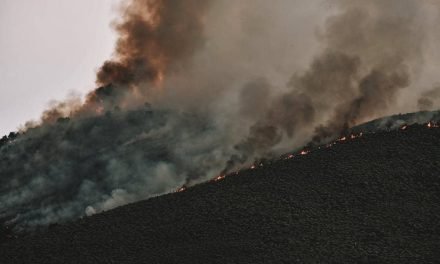Air Quality in Miami Valley Remains “Unhealthy”
Smoke and haze persistently shroud sections of North America as polluted air spreads across the continent, emanating from the numerous wildfires raging throughout Canada.
The Air Quality Index (AQI) in the Miami Valley on Thursday was solidly in the “unhealthy” range all day, according to the Regional Air Pollution Control Agency (RAPCA).
The AQI readings on Thursday reached 169 at 11:24 a.m. and 162 by 4 p.m., exceeding the threshold for unhealthy air quality.
Local AQI readings were even higher on Wednesday morning, with levels surpassing 200.
Smoke From Canadian Wildfires Engulfs Several States
Drifting smoke from the wildfires has blanketed broad areas of Canada and the United States, extending as far as southern Illinois, Indiana, Ohio, and parts of West Virginia.
Canadian officials have reported that this year’s wildfire season is the nation’s worst on record, and they anticipate air quality concerns to persist throughout the summer.
The smoke has created curtains of haze, raising concerns about public health and necessitating precautionary measures.
Researchers Develop Method to Trace Wildfire Smoke’s Origin
As smoke from wildfires increasingly crosses state and international borders, tracking and studying its origins have become crucial for shaping air quality and health measures worldwide.
A forthcoming study from Stanford University researchers introduces a new method to trace far-flung smoke and pollution back to the individual wildfires responsible.
The composition of smoke varies based on the type of fire, such as forest fires or fires in swamps or buildings.
By understanding the chemical composition of the smoke, officials can identify wildfires with the greatest health consequences and allocate firefighting resources more effectively.
The increase in Wildfires and Smoke Pollution Raises Concerns
In recent years, wildfires have become more frequent and intense, largely fueled by the effects of climate change on drying landscapes. However, scientists have had limited knowledge about how smoke from these fires has changed over time.
The new Stanford study reveals a worrisome trend: from 2016 to 2020, the U.S. population experienced double the smoke pollution compared to the previous decade (2006-2010).
While the study focuses on historical data, it also offers the potential for predicting the path of smoke from new fires.
Particulate matter, a dangerous pollutant found in smoke, poses risks to human health, causing respiratory problems and inflammation.
Study Identifies Surprising Wildfire with Greatest Smoke Exposure
Using their innovative method, Stanford researchers ranked wildfires observed in the United States between April 2006 and December 2020 based on smoke exposure.
Surprisingly, the worst fire in terms of smoke exposure during this period was the 2007 Bugaboo Fire, which burned more than 130,000 acres in and around the Okefenokee Swamp, spanning Georgia and Florida.
This finding challenges traditional rankings based on factors like acres burned or infrastructure damage.
While immediate threats to life and structures are crucial, overlooking fires with significant smoke exposure neglects the long-term health impact on densely populated regions.
Air Quality Alerts Affect Over 120 Million Americans
The air quality problems caused by Canada’s raging wildfires are affecting more than 120 million Americans, according to weather officials.
The National Weather Service (NWS) issued Code Red alerts, indicating unhealthy air quality, for several Midwest states through the Ohio Valley and into the East Coast.
Code Orange alerts, indicating unhealthy air quality for sensitive groups, were issued for neighboring states.
Major cities like Detroit, Washington, DC, Chicago, and New York City are experiencing some of the world’s poorest air quality.
The NWS warns that poor air quality conditions are likely to persist due to ongoing wildfires and prevailing wind patterns.
Canadian Wildfires Set Record as Smoke Travels to Europe
Canada is currently witnessing its worst wildfire season on record, with hundreds of active blazes ravaging provinces like British Columbia, Alberta, Ontario, and Quebec.
The scale of these wildfires has surpassed the previous record set in 1989, with more than 3,000 wildfires burning nearly 20 million acres of land in the first six months of 2023.
Over 500 active wildfires are currently categorized as “out of control.”
The smoke from these fires has even traveled across the Atlantic Ocean, reaching parts of Europe such as France, Spain, and Portugal.
As the severity and frequency of wildfires continue to rise, the impact on air quality becomes a pressing concern for governments worldwide.
Managing air quality in the face of cross-border pollution necessitates evolving strategies and cooperation.
Researchers and officials are exploring new methods to monitor smoke dispersion and protect vulnerable populations from the health hazards posed by Canadian wildfire smoke.










